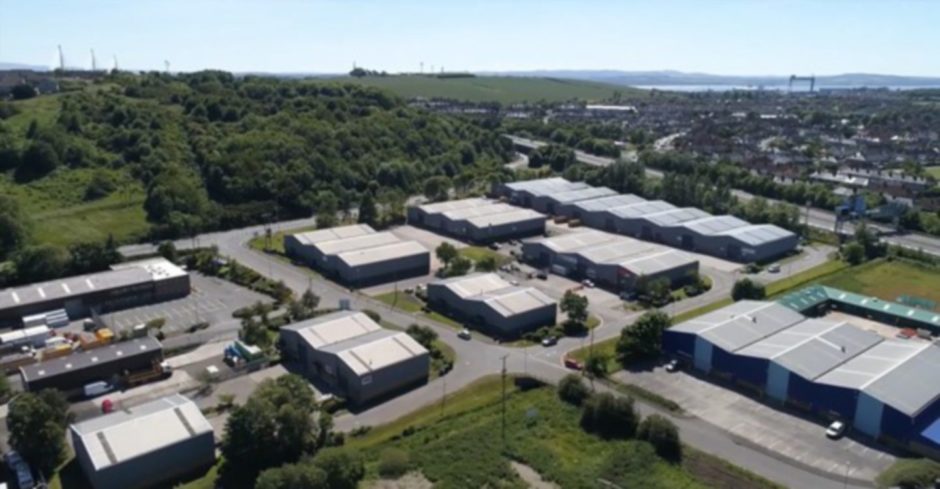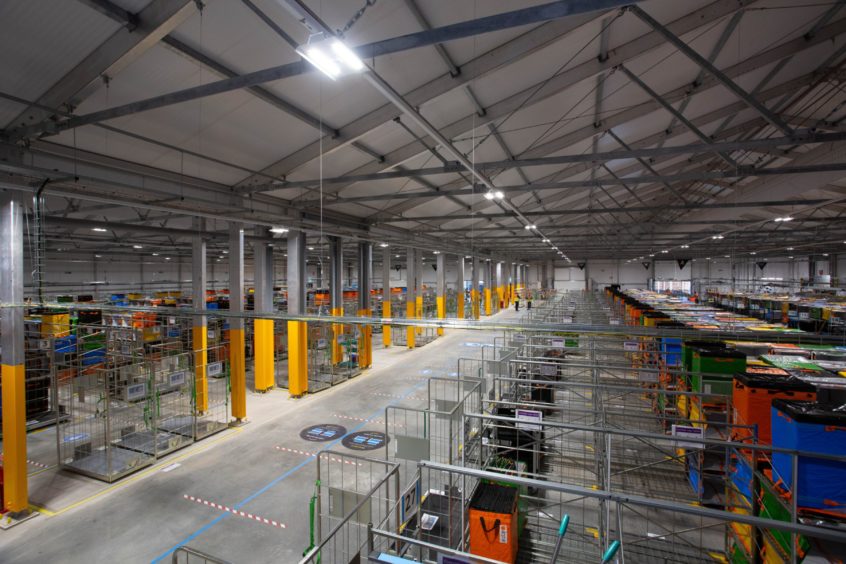An Aberdeen-based property expert has said the Scottish logistics market is enjoying its strongest occupational demand in 25 years.
James Barrack, founder and chairman of Granite City-based Knight Property Group, highlighted a structural shift in demand for the industrial and logistics sector.
A driving factor is a seemingly insatiable demand for online shopping, which should lead to longer-term, “more sustainable” growth, he added.
Appetite is strong across the board in the industrial and logistics sector.”
Simon Cusiter, Lismore Real Estate Advisors
Mr Barrack was speaking as Lismore Real Estate Advisors launched its latest quarterly review of the Scottish property investment market, saying the road to recovery was “starting to become evident”.
The report focuses on activity in the Scottish logistics market, which Edinburgh-based Lismore says is “witnessing strong impetus”.
Rents are rising and yields are hardening, but still lag those achieved in key locations south of the border, Lismore adds.
Meanwhile, speculative development is “becoming more feasible” and, amid the current imbalance between market supply and demand, developers “brave enough to get in early” will be “well-placed to achieve letting and investment sale success”, the report says.
Lismore highlights “significant” activity by Knight, which is at the forefront of speculative logistics development at Belgrave Logistics Park in Bellshill, North Lanarkshire.
When complete, the project will extend to around 250,000sq ft of “high spec and sustainable” accommodation on a 14-acre site.
Mr Barrack, who won the entrepreneur of the year title in the 2019 Elevator Awards, said: “This is the strongest occupational market we have seen in the past 25 years.
“There has been a structural shift in the demand for the industrial and logistics sector, particularly with the exponential growth in online shopping, which should lead to longer-term more sustainable growth.”
Mr Barrack added: “The future hot spots for speculative development in Scotland will always be driven by location, although quite rightly, the ESG (environmental, social and governance) agenda is also moving towards the top of occupier’s requirement criteria.
“Availability of oven-ready land which ticks most of the occupier boxes may force tenants to take a view on some compromises.
“Pre-let demand is as high as we have ever seen in this sector but not all tenants can wait for new stock to be built. With rising construction costs, the short-term winners could be average quality second-hand stock – which could witness rental improvement if new build pipeline slows.”
Investment deals have surged after a weak first quarter
According to Lismore, Scottish investment transaction volumes in the second quarter of 2021 were up by 71%, compared with the previous three months, with about £300 million traded.
But activity still remains some 30% below the five-year average, due to the Covid-19 crisis.
Lismore predicts the second half of the year will be more positive, with around three significant transactions north of £50m understood to be in the pipeline.
Growing appetite for life sciences
Chris Thornton, associate, Lismore said: “Activity in the last quarter has continued to see the wall of overseas equity targeting our best long income assets.
“This has included the emergence of American Reits (real estate investment trusts) in the Scottish market, mainly focused on longer income retail warehousing, with schemes anchored by food stores and value retailers being particularly liquid.
“We have also seen the continual growing appetite for anything close to the life sciences sector.
“On the downside, city centres are taking time to regain momentum, with footfall remaining fickle and retailers and restaurateurs having to work very hard to attract customers back through the doors.
“Retail re-purposing has started in some of the strongest streets but there remain significant challenges for those city centre locations unable to attract alternative use investment.”
‘Tiering effect’
Lismore director Simon Cusiter said: “Appetite is strong across the board in the industrial and logistics sector, but we are certainly witnessing a ‘tiering effect’ when it comes to sub-sectors and rents.
“In the short-term, we anticipate the new development focus being on the golden triangle of the M8/A725 and M74, but the demand/supply dynamics and lack of oven-ready land will certainly open up alternative locations going forward.
“The traditional multi-let market continues to be heavily dominated by sector specialists, with the mainstream UK institutional market struggling to find appropriate scale in individual lot sizes.”
Mr Cusiter added: “In terms of logistics, new-build or modern, high-quality buildings are witnessing strong growth, with rents ranging from £7 to £10 per sq ft, with rents for bespoke facilities ranging from £10 to £15 per sq ft.”
“With continued demand, pressure on land and low availability of fit-for-purpose stock, a rise of 2.5% pa (per annum) over the next three years could certainly be achieved.”
“Some commentators are suggesting Europe needs an additional 300 million sq ft of industrial stock by 2025.
“With the UK’s share being in the region of 60m sq ft, this could spell good news for developers and landlords”




